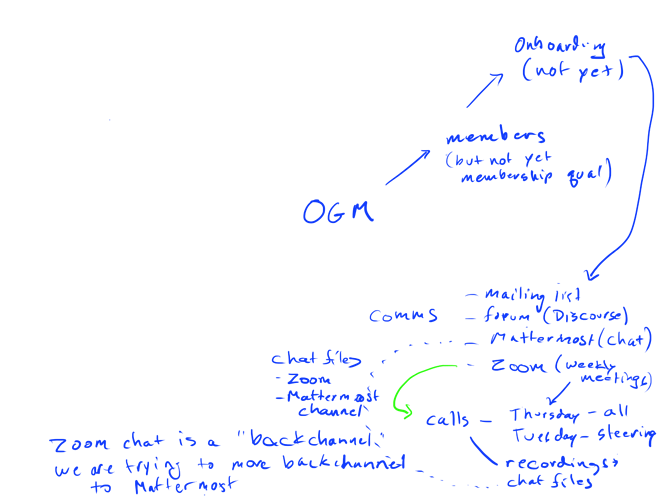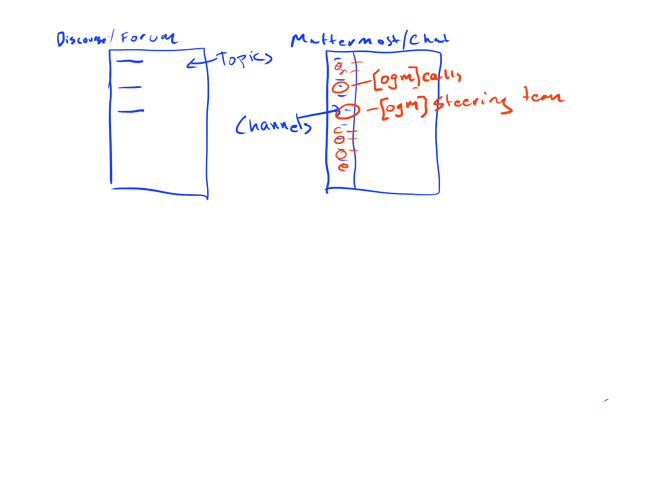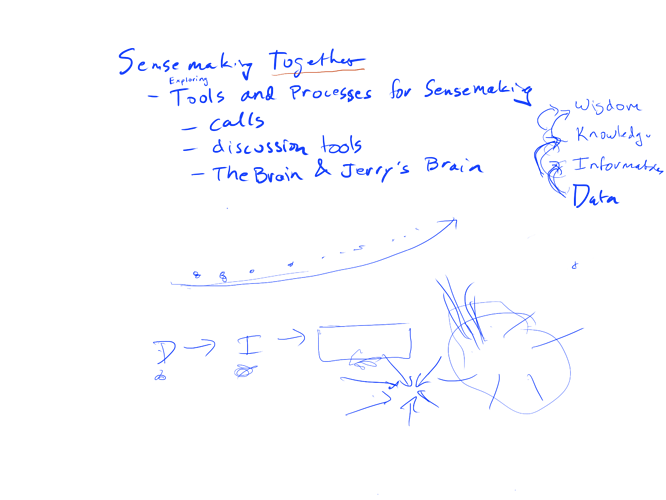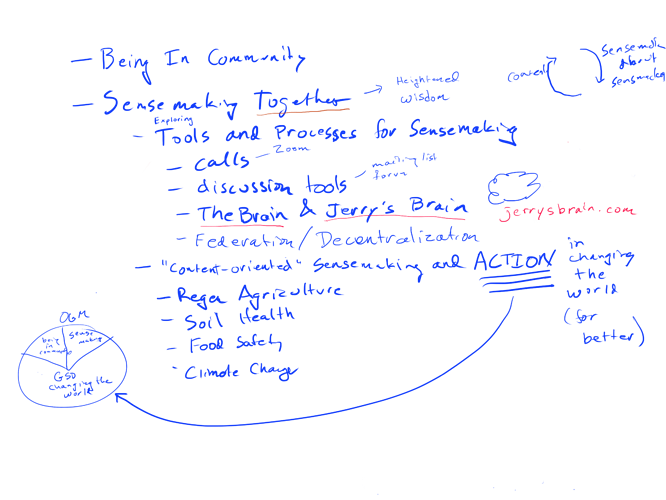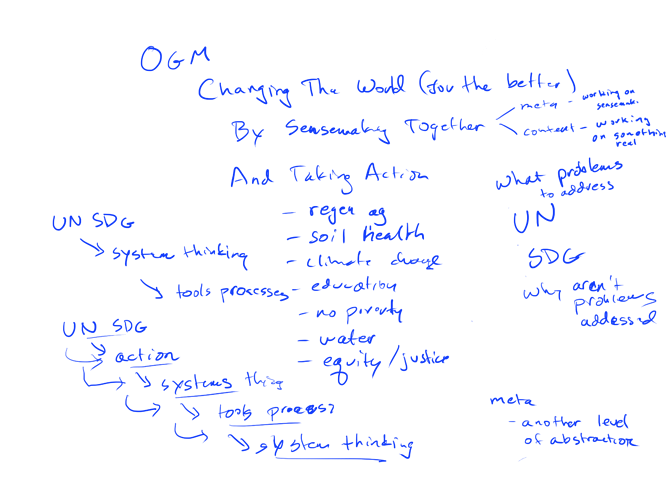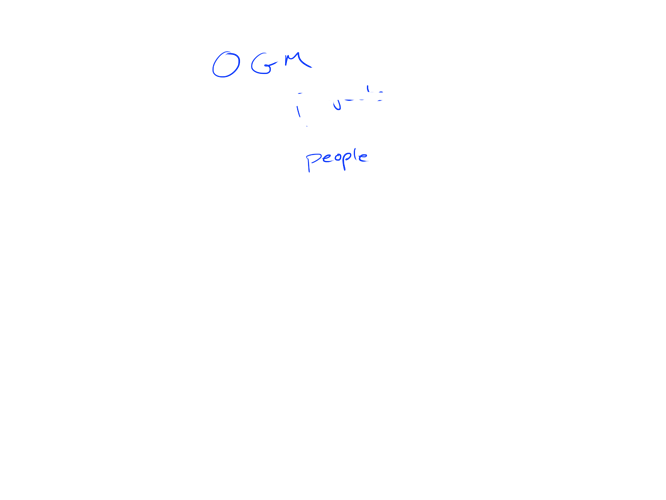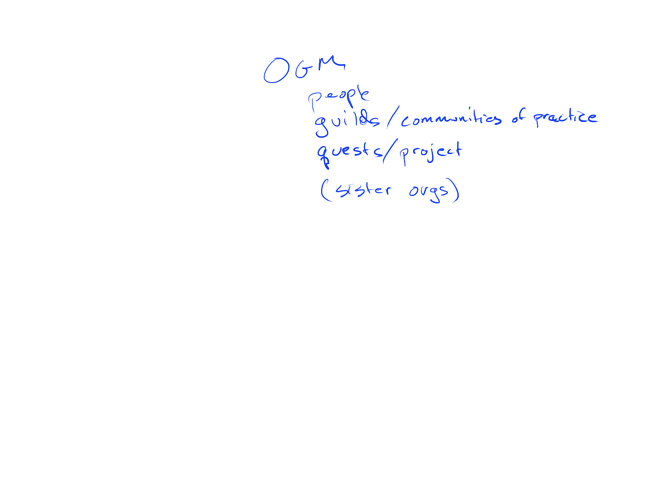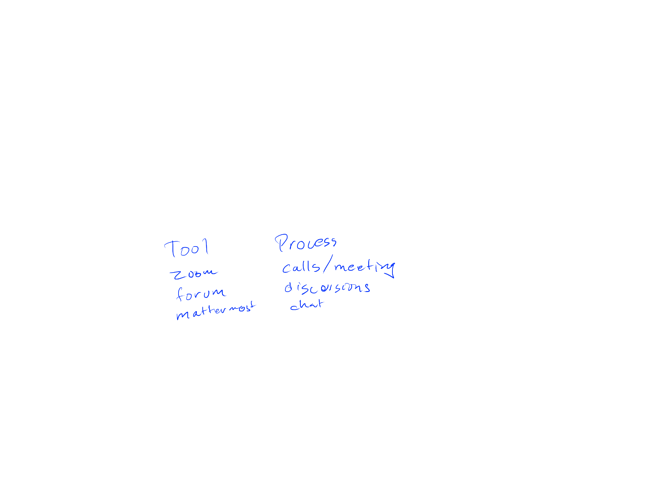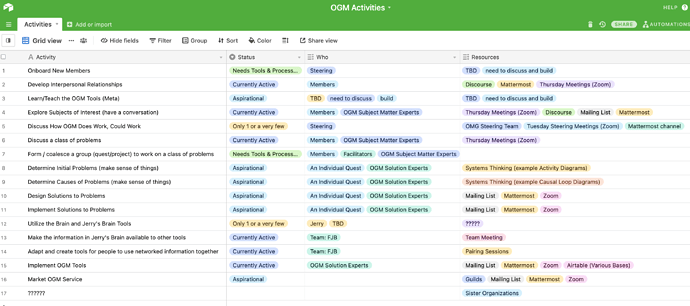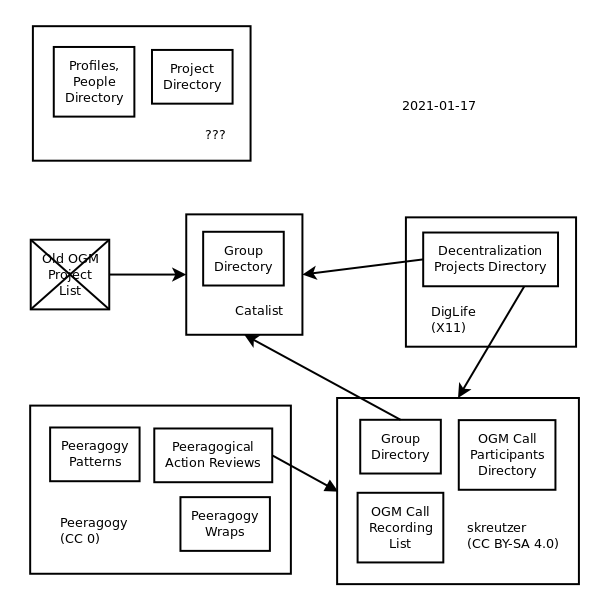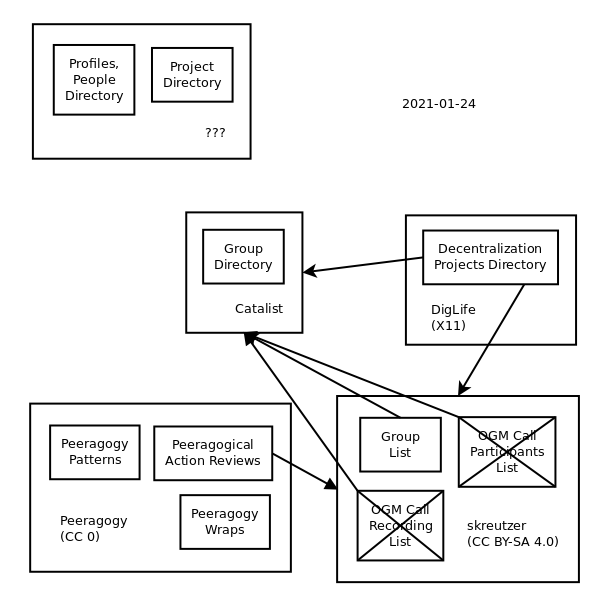Hey, so if you want to see a little bit of sausage-making, @Tony and I have a small project/quest to create activity diagrams of OGM (or at least, parts of it).
Tony is the Activity Diagrammer.
I have been a Subject Matter Expert in OGM and some of its activities, tools, and processes.
We’ve had two zoom calls this week, sharing diagrams, drawings, tables, and of course, talking through things. We don’t have recordings of the talking, but there are digital artifacts which do persist. I’ll share them as the imperfect, in-process, and incomplete tracks and traces through the forest we’ve taken that they are. At some future point, we may end up with more finished activity diagrams, we’ll see.


